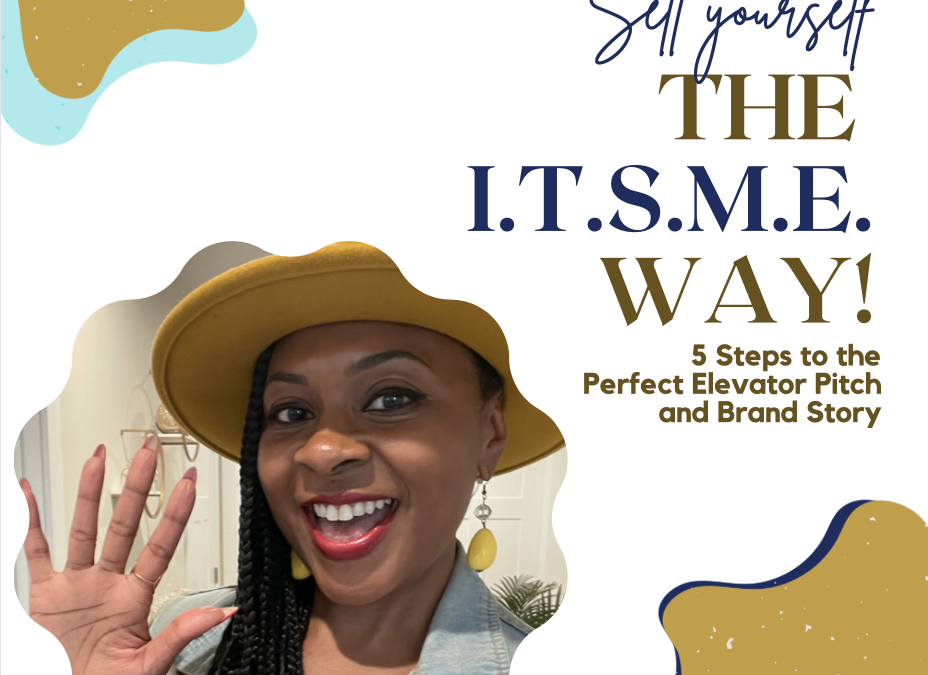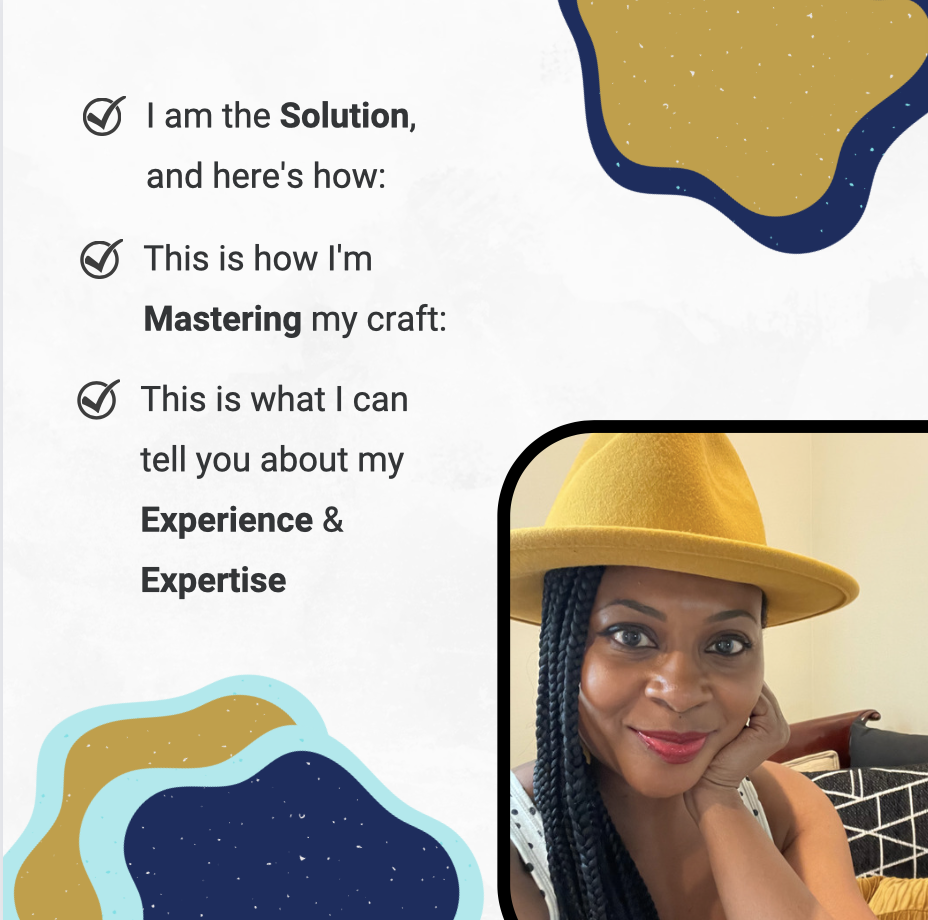
How to Sell Yourself in Just 5 Steps – the ITSME Way!
5 Steps to the Perfect Elevator Pitch or Brand Story
Every job seeker and entrepreneur has learned just how important it is to make a great first impression, and sell yourself or your business to a new company, customer or new investor. When you have just minutes to get their attention and share essential information about yourself and your professional brand–the information that’s going to get your foot in the door, get your product into the right hands, or otherwise get money in your pocket–what do you say? What’s essential, and what’s not? I’m going to show you how you really self yourself in just 5 steps. When it’s time to create or fine-tune your elevator pitch or brand story use this 5-step approach I call my ITSMETM Approach.
The simple technique to selling yourself is to remember: I.T.S.M.E. “It’s Me!”
The essential sales pitch–the Elevator Pitch–earned its name from the idea that it should be delivered in the short time it takes to share an elevator with someone who’s interested in your skill set or business–typically 30- to 60 seconds. The term has survived in the business and finance spaces for decades as the fabled elevator ride a hungry applicant or business owner lucks upon with the hiring manager, executive or venture capitalist on the way up to their corporate office. In essence, you never know who you’re on the elevator with so you better represent yourself well! Back then, your pitch might have been about skills, features and quantifiable information. Today, that elevator pitch is more about forming the connection that fosters a relationship built on trust and relatability. It’s about sharing, “This is who I am, and this is what I’ve built my professionalism on.” I’ve coined this sales pitch the “ITSME pitch”. It’s. Me. I’m not just selling my service or skill set here, I’m selling myself and the experiences that formed the professional I am today.
And if the elevator pitch establishes the connection, then it’s the brand story that nurtures the budding relationship. Just as with any other relationship, vulnerability and transparency are essential and you might start by revealing precisely the information you’d rather avoid. To form a relationship we have to be relatable. For this story, you’ll need at least 2-3 minutes–as building relationships take a little more time, constructed on a little more turmoil. This additional time allows you to take your audience on an emotional journey that reveals the strength and reliability of your triumph, having been built in and overpassing your trials.
Want to see how easy it is to sell yourself in just 5 steps?

The “I” in ITSME is the simple Introduction. As fundamental as this is, many people forget to simply introduce themselves! Make it a habit to share your name and/or your business name immediately. “Forgive the interruption, Ms. Executive! I’m Marceia Cork–I attended your webinar last week and you shared your frustration…” Much like what you were taught in grade school, your statements should cover the basic who, what, when, where and why you’re meeting or how you were previously connected.
Do you have a Testimony? Trauma? Triumph? Your “T” might be any of these. Whatever it is, this is where you share your truth. Something from your past has helped shape your professional goals. Sharing that story is precisely what’s going to make you relatable. In social media marketing customers do business with people they like, know and trust. Sharing your truth gives people a glimpse into your life. Combined, that access and authenticity creates a bond as you also show them you trust them with your truth.

You’re the Solution. Now it’s time to offer up yourself and your services as the solution. Position this solution as both the solution to overcoming your own testimony and triumph, alongside how you can help them and those they may also serve.
Mastery and Expertise. Which brings us to the M and E of the ITSME approach. Close your pitch and brand story by proving you deserve their investment of time and money. You do this by briefly explaining what you’ve done to master your craft, and to perfect your product or services. Explain to them just what makes you a credible source or trusted provider for what you offer and how you’ve gained that experience and expertise.
This isn’t about rattling off the degrees you’ve earned–because not everyone has gone to college or earned degrees in the industries in which they’ve started their businesses and careers. What’s more important to note here are the keys to your current success–how you’re improving and mastering your skills, and how you, your services and skills stand out above any others. Of course it’s okay to mention your degrees if it’s relevant, or if it helps establish the connection with the listener–say, if they went to the same school. Otherwise, skip it and focus on your unique, soft skills and tactics that made you stand out among the others.
I can say all of that in 1-3 minutes? Yes. As a media trainer, interview and public speaking coach I teach clients how to structure a basic speech or prepared statement based on the time allotted for the speaking opportunity. As you perfect this technique start by simply breaking it down into (somewhat) equal parts.
The ITSME approach has 5 parts–for an elevator pitch that’s about 85 words, with 10-12 seconds per topical area. Spend about 12 seconds telling people your name and referencing the how’s and when’s of your initial meeting or connection, then spend about 10-12 seconds on every other area: 12 seconds sharing the testimony or trauma or that helped shaped your business decision, followed by about 12 seconds for each of the remaining areas. In a nutshell that’s about three short supporting statements per area.
For your brand story that’s more like an average of 200 words, and 45 seconds per topical area, which could look like 30-45 seconds of your name and background on the initial meeting or connection, then 45 seconds to a minute on the other areas: the testimony or trauma or that helped shaped who you are as a professional, followed by about 45-60 seconds of longer-form, solution-driven statements that note mastery of your craft, and highlight your expertise.
This structure means being methodical; having a formula you can repeat without ever overlooking an essential. Even Apple has their own five-step approach to the great service they provide, and boasts being service- and people-focused over highlighting technical product features. And now you do too. That’s how to sell yourself in just 5 steps. That’s the “It’s Me!” way.
Like what you’re reading here? Please take a minute to share on social!


